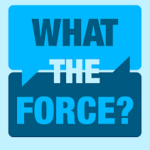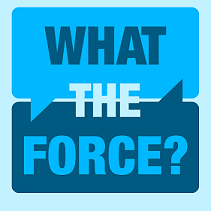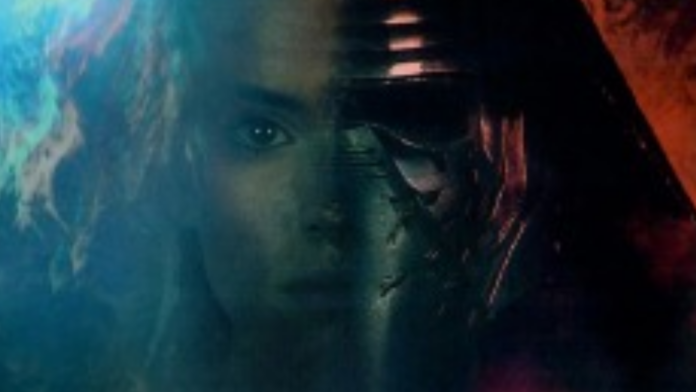PADME : You’re…a slave?
ANAKIN looks at PADME defiantly.
ANAKIN : I am a person! My name is Anakin.
We are both part of our institutions and individuals, both are true from a ‘Certain Point of View’. Star Wars has been split into binary categories since the beginning: Good / Evil, Light Side / Dark side. You are part of the Resistance or the First Order. You are a Jedi or a Sith. But in our favourite mythopoeia and in real life, sometimes more than one thing is true.
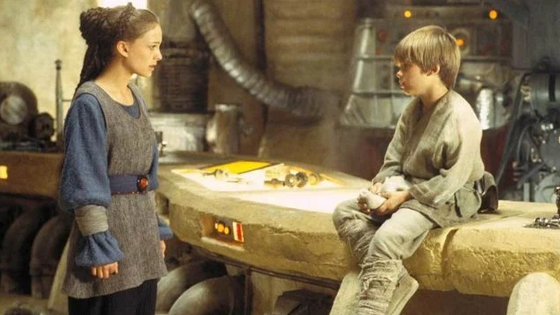
In the above interaction between Padme and Anakin in Star Wars: The Phantom Menace, we see Padme act surprised with her first assumption about Anakin. “You’re …a slave?” She at once defines him by the systematic institution and associates him with slavery and what that connotation could mean. Anakin corrects her, “I am a person! My name is Anakin.” With this small statement, he demands that his perspective is the truth, that he is more than his situation. Padme acknowledges his independence. However, this doesn’t mean her assessment of his situation initially isn’t true as well. He is a slave and in denial of his true situation. He ends up railing against this his whole life when one form of servitude exchanges for progressively more restrictive forms with the Jedi and eventually under Darth Sidious and the Empire. Our little boy grows into a young man struggling to find his true self because he has denied the truth of the darkest parts of his past.
Scholar Joseph Campbell used Jungian Philosophy to categorize much of the psychological motifs and archetypes he found in universal myth. Joseph Campbell influenced some of the earliest choices of Star Wars and continued to work with George Lucas on future movies nearing the end of Campbell’s life at Skywalker Ranch while he was filming the ‘Power of Myth’ with Bill Moyer. In addition, we know Rian Johnson read the Hero with a Thousand Faces, A Modern Man In Search Of A Soul – Jung, and A Little Book On The Human Shadow – Robert Bly. There is so much to unpack with these important thought leaders, but the struggle of accepting our darkness and learning how to move forward daily, improving ourselves and our communities, is a common theme across Myth, sacred stories from our past, our western psychology, and literature.
Jung and Bly describe the darkness we carry with us as our Shadow, and it is our subconscious thoughts and feelings if denied that grow within our psyche causing us to be consumed by feelings like anger, fear, and hate. The way out is through understanding and unpacking the trash bag (or baggage) we carry with us and sorting through it determining what is useful and what needs to be put away in its proper place (Recycling etc).
The problem with denial of the negative aspects of ourselves is that they just grow. We deny they exist and so continue to feed the pile of unresolved trash we don’t want to look at, until our shadows are so big we see them everywhere and on other people. When it does, we start to project aspects of ourselves on people we interact with and even characters in our fiction. This is really an opportunity to examine why we feel that way and Marie Kondo that aspect of ourselves into the right place!
Anakin ignores the slave aspect of himself. He puts away his feminine side (his anima) in denying his desire to be with his mother. He isn’t supposed to feel that need, and he isn’t allowed to speak about it because of the Jedi. In Attack of the Clones, this theme continues. He denies his feelings of anger, pain, loss, desire and greed. The denial of self continues as he enters his secret marriage with Padme.
The subsequent years are spent building their personas as an important senator and Hero of the Republic. These public faces become like institutional pillars for the Republic. The Revenge of the Sith novelization by Matthew Stover describes the idol-like worship of Anakin and Obi-wan as heroes who can handle any situation.
In a January 2002 Oxygen special, Carrie Fisher interviewed George Lucas on his process and ideas. They discussed his thoughts on the Prequel Trilogy and how it was to explore how a good man became bad with good intentions. Carrie said,“I’ve found coming to my endless age that nothing is just one thing… Nothing is ever purely bad or purely good, in Star Wars maybe?” George replied,“Well that’s it. Isn’t it really because in the end, you find out the most evil person was really the hero.”
Looking at Star Wars as a journey of the self into a more fulfilled transformed person is hopeful and helps us realistically face the challenges of our past trauma, social circle shadow, and community/country shadow. Figuring out how to navigate the binaries of our world allows us to find balance and bring that balance to our personal circles and communities.
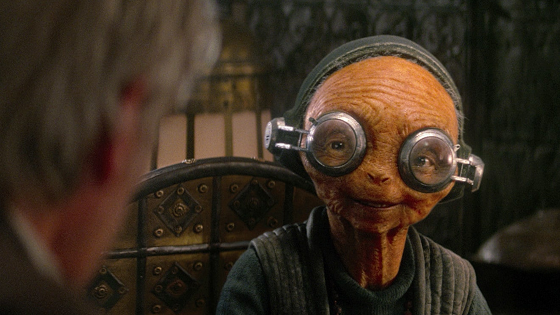
“The only fight. Against the dark side,” Maz reminds us in The Force Awakens The endless struggle to overcome the darkness within our world is one we see play out on a daily basis. It feels like the world is becoming more and more difficult to get by in. Much like the pull of political binaries, Galactic politics play out similarly between a desire for control and a desire for freedoms in political factions. It is fundamental to the conflict between the Empire and the Rebellion which continues in the form of the First Order versus the Resistance. This plays out on the stage in a grand scale in the Wars that plague our Stars far, far away. It almost always ends up being pushed to the next generation to attempt to make better, but inevitably they end up in a conflict of their own fueled by an increased history of the past. Philosopher George Santayana said, “Those who cannot remember the past are condemned to repeat it.” This aphorism doesn’t account for people who do understand the history and still choose to make their perspective a priority over compassion for others. It’s almost like no matter how much we try to do good or others do bad, we still end up suffering and struggling makes it worse.
It’s hard to wrap your head around these concepts. The idea that in some ways no matter what we do, our history, our collective shadow of the past grows and is enhanced by the never-ending struggle of political binaries. It’s so human.
In Star Wars, these dualities continue. The Force is the main binary concept. I’m not talking about light and dark sides, but I will get there. The Force is both the individual and the interconnected web of energy between all things. We are both the Galaxy and the individual. Lao-Tzu would appreciate the creative liberties and good stories to illustrate Taoism through the story. We are both part of the whole and an individual. But as we move into eastern thought we see more models of overcoming binary thought.
The Dark vs. Light binary fairs no better when we fail to acknowledge the darkness within. George Lucas describes the difference between the two as fundamental selfishness and selflessness. A person able to commit to ultimate selflessness according to eastern tradition is a bodhisattva They delay their ascendance to Nirvana to ease the suffering of those around them. In practice, very few people are capable of ultimate compassion and selflessness at the expense of their own wellbeing. By sleeping in security, we are denying that to others. By eating, we are destroying life. Every action we take has both positive and negative results. The only thing we can do is be aware of our actions and understand that being selfish for the sake of being compassionate to yourself so that you can hope to continue to help others is a more balanced way to approach life.
Through the teachings of Alan Watts on ‘the Middle Way’, we enhance our understanding that we humans have the sensitivity to experience pleasure. Elimination of desire to escape from suffering, like the Jedi, ignores those aspects of ourselves. The darkness, the suffering follows you. Don’t think of the colour red. Red is passion. Desire is red. Don’t think of RED. You thought of it. It is a vicious circle. Fear to avoid the pain is a lack of trust and love in the universe. Alan Watts explains, “When the wrong man uses the right means, the right means work in the wrong way.” We have to work with what we are given, whatever that is, and find our truth. We often identify ourselves in us vs them, but it’s never us alone, we are never separate from the world we exist in.
Finding a transcendent moment through the story is what I always hope for in Star Wars. That through the story we love, we see truths about ourselves. That two things can be true at the same time. This Myth that Star Wars creates is very powerful when it connects with us. Bill Moyer in the Power of Myth series said, “A myth is a mask of God, too, a metaphor for what lies behind the visible world.” When we can see beyond the eternal, we truly understand the complexity of our human existence and experience briefly beyond time what it would be like to look at eternity. This quest for beyond the binary is what we as humans strive for and when Star Wars is at its best succeeds in showing.
I have hope for future storytelling, seeing the complex theme of finding a middle way, a truly transcendent moment echoed in their individual works. Future Star Wars Showrunner, Leslye Headland’s Russian Doll show has a pivotal moment as Nadia’s mentor and surrogate parent Ruth Brenner advises her that, “Holding two incompatible ideas in your head at the same time and accepting both of them–that’s the best of being human.” What you do when you know both things are true is what makes the difference. We need to see our heroes understand their darkness and light and choose the third path. In Star Wars, we are both.
Links:
The Power of Myth
